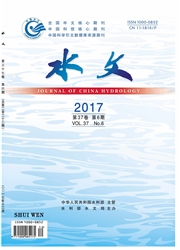

 中文摘要:
中文摘要:
目的:研究脑源性神经营养因子(BDNF)和端粒酶逆转录酶(TERT)联合转染的骨髓基质干细胞(BMSCs)对血管性痴呆(VD)大鼠学习记忆功能恢复的作用,进一步探讨VD的有效治疗途径。方法:经大鼠股骨分离并鉴定BMSCs,构建pLXSN—TERT重组子后转化至BMSCs,软琼脂克隆形成实验检测体外培养的TERT—BMSCs的成瘤性。应用Ad5一BDNF转染TERT—BMSCs,构建BDNF—TERT联合转染的BMSCs。将40只雄性Wistar大鼠随机分为4组:对照组、VD组、BMSCs组、BDNF—TERT—BMSCs组。采用两血管阻断法制备VD模型。采用Morns水迷宫测试方法测试各组大鼠空间学习记忆力。应用RT—PCR和Westemblot方法分别检测各组大鼠海马CA1区BDNF、TrkB、SYN基因mRNA和蛋白表达情况,应用透射电镜观察各组大鼠海马CAl区超微结构变化。结果:行为学实验Mo州s水迷宫测试结果及超微病理透射电镜观察均显示BMSCs和BDNF—TERT—BMSCs对血管性痴呆大鼠有改善作用,且BDNF—TERT—BMSCs较BMSCs的作用更为显著。荧光实时定量RT—PCR和Westernblot结果显示,BMSCs组和BDNF—TERT—BMSCs组中BDNF、TrkB、SYNmRNA及蛋白表达水平均较痴呆模型组增高(P〈0.05),且BDNF—TERT—BMSCs组较BMSCs组增加更为显著,差异有统计学意义(P〈0.05)。结论:BDNF—TERT联合转染BMSCs较普通的BMSCs对VD有更好的治疗效果,可明显改善VD大鼠的学习记忆功能的恢复。
 英文摘要:
英文摘要:
Objective: To study the effects of BMSCs co-transfected with TERT and BDNF on the expression of BDNF, TrkB and SYN in hippocampal CA1 region of rats model with vascular dementia (VD). Methods: Rat BMSCs were isolated and identified, then transfected by pLXSN-TERT recombinant. Colony formation assay in soft agar was used to detect the tumorigenicity of BMSCs in vitro. TERT-BMSCs were transfected with Ad5-BDNF. Forty male Wistar rats were randomly divided into four groups (10 rats in normal control group, 10 in dementia model group, 10 in BMSCs group, and 10 in BDNF-TERT-BMSCs group). Two-vessel occlusion was employed to make VD models. Morris water maze test was done to detect the ability of spatial learning and memory. Then the expression of BDNF, TrkB and SYN in hippocampal CA1 region were determined by real-time RT-PCR and Western blot. The ultra-micro structures of synapses in the four groups were detected by transmission electron microscope. Results: The behavior and morphology of the VD rats treated by BMSCs were enhanced. The average expression of BDNF, TrkB, SYN mRNA and protein in VD group was significantly lower than that in control group (P〈O.05). The average expression of BDNF, TrkB, SYN protein in BDNF-TERT-BMSCs group were higher than those in BMSCs group and VD group (P〈0.05). The ultra-structure of synapses in BDNF-TERT-BMSCs group was improved significantly compared to BMSCs group and VD group. Conclusion: BMSCs co-transfected with TERT and BDNF could improve the ability of spatial learning and memory in VD rats. The mechanism might be associated with enhancement of the expression of BDNF, TrkB and SYN mRNA and protein and it might have an effect on the synaptic plasticity in hippocampal CA1 area.
 同期刊论文项目
同期刊论文项目
 同项目期刊论文
同项目期刊论文
 Bioinformatics analysis of Zinc-alpha2-glycoprotein,a potential serological marker for hepatocellual
Bioinformatics analysis of Zinc-alpha2-glycoprotein,a potential serological marker for hepatocellual 期刊信息
期刊信息
